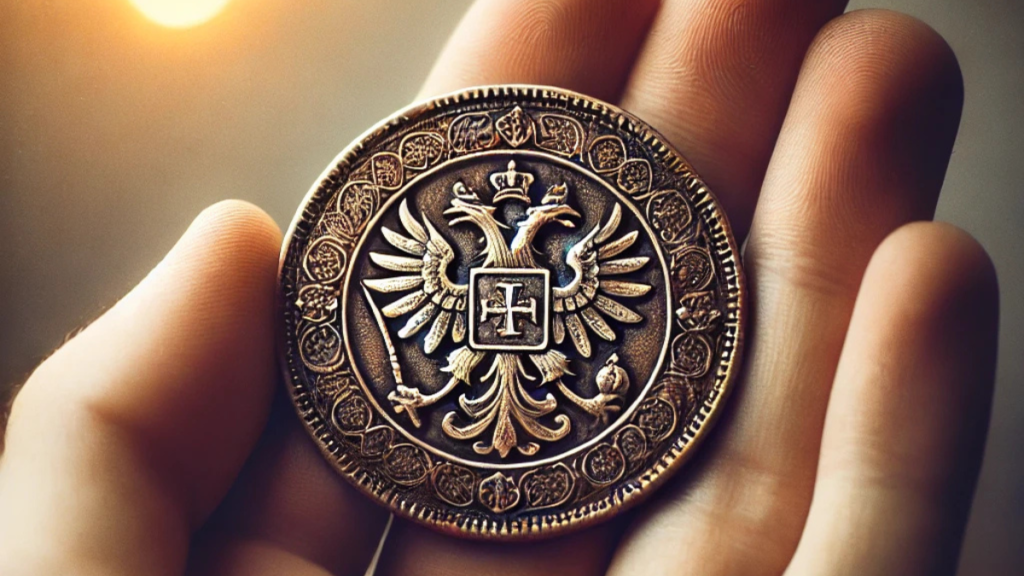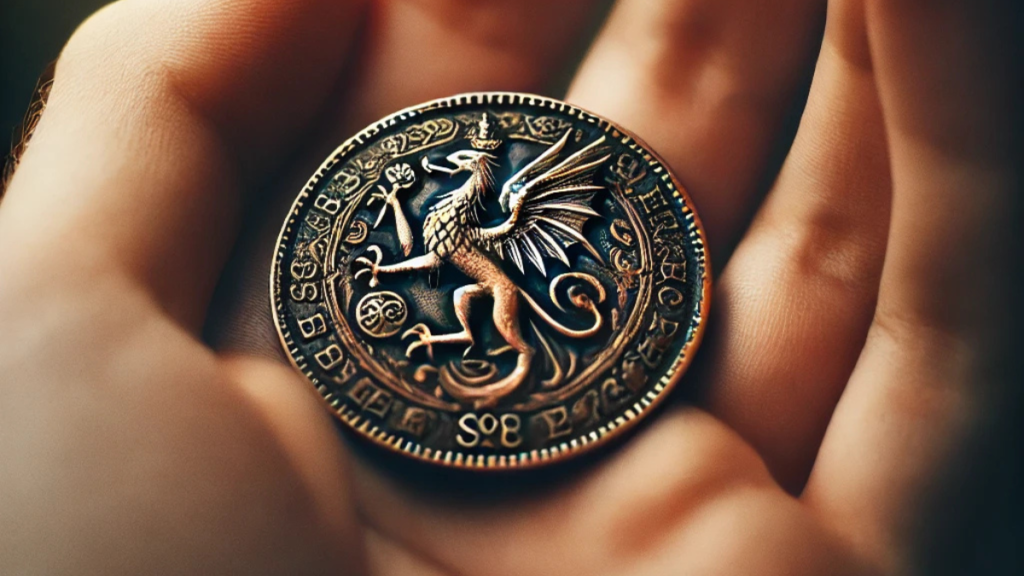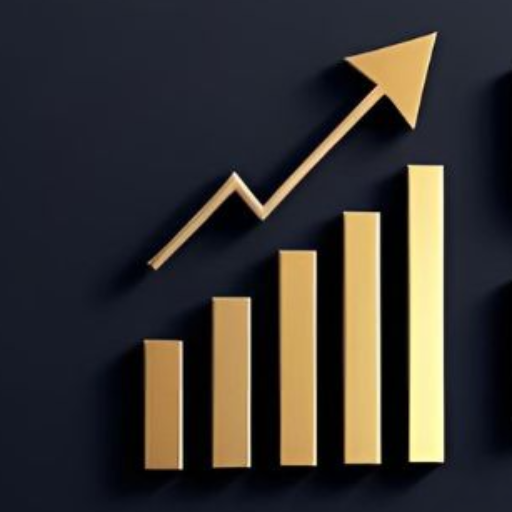10 Iconic Coins : Numismatists and casual collectors alike are buzzing about an unusual opportunity in today’s currency market: a selection of rare design variants of otherwise common coins that remain in circulation.
This collection of 10 iconic coins, if found in your pocket change, could be worth a combined value of approximately $764. As with the majority of high-value coins drawn from circulation several decades back, these rare ones still find themselves changing hands on a day-to-day basis, at times unaware of their owners at the time.
1. The 1995 Double Die Lincoln Cent ($45-80)
Among the rarest of new cents, the 1995 Double Die Lincoln penny features doubled characteristics on the obverse of the coin, readily apparent in “LIBERTY” and the date. The doubling was done during the production process when the hub pressed the design on the die a number of times but slightly misplaced it.
Approximately 500,000 of the coins were minted before the mistake was found, and though many have been found, there are thousands likely still in circulation, passing hand to hand unseen. The wonderful thing about the 1995 Double Die cent is that it’s still available in circulation finds,” says Marcus Jenkins, curator at the American Numismatic Society.
“Whereas the popular 1955 Double Die was quickly detected and stockpiled, the 1995 type went undetected for years.”
2. The 2004-D Wisconsin State Quarter “Extra Leaf” Variant ($85-300)
The 2004 Wisconsin state quarter has a cow, a wheel of cheese, and an ear of corn. But certain quarters produced at the Denver mint have what seems to be an additional leaf on the cornstalk. Numismatists argue whether or not this was a result of a deliberate die modification or a serendipitous die gouge, but in either case, the coins sell at high premiums.

In circulated condition, they usually bring $85-150, with perfect specimens selling for $300 or more. Around 50,000 of these versions were placed into circulation, and many still lie hidden in loose change and quarter rolls gathered during the highly popular 50 State Quarters Program.
3. The 2005-P “Speared Bison” Jefferson Nickel ($15-65)
This contemporary error coin features what looks like a spear through the back of the bison on the back. In actuality, this was caused by a die gouge that was not caught during production at the Philadelphia Mint. Although not as scarce as some of the other listings on this list, it is still one of the most striking-looking modern error coins, with the bold line slicing dramatically across the silhouette of the bison.
Thousands of these nickels came into circulation prior to the defective die being replaced, and numerous examples remain in circulation today, worth $15-65 according to condition.
4. The 2009 “Formative Years” Lincoln Cent with Doubled Die Reverse ($30-75)
One of the special Lincoln Bicentennial coins, this cent depicts Lincoln sitting on a log, reading a book. Certain examples exhibit clear doubling on the reverse, especially noticeable in the log details and Lincoln’s shirt.
These double die errors are rare but continue to circulate, with prices from $30 for worn ones to $75 for coins in almost uncirculated condition.
“The 2009 cent series featured four unique reverse designs within one year, which created quality control issues,” says Diane Harrington, expert numismatist. “That opened the door to error coins that still pay off for keen collectors today.”
5. The 2000-P “Wounded Eagle” Sacagawea Dollar ($50-200)
This variety reveals what looks to be a line or crack through the eagle’s belly on the back of the golden dollar. Though argued as to whether this was caused by die damage or a deliberate die variety, these coins are still highly sought after.
The unique characteristic, along with the overall limited circulation of dollar coins, makes this a difficult but feasible discovery, worth between $50 and $200 based upon condition. With Sacagawea dollars still sometimes issued by post office vending machines and transit agencies, these coins have not fully vanished from circulation.
6. The 1992 “Close AM” Lincoln Cent ($30-75)
There is a little room between the “A” and the “M” in “AMERICA” on the back of regular 1992 pennies. Although very few 1992 cents were struck in a reverse proof die and made with a tighter letter configuration, they appear when a trained eye examines carefully enough.
While often considered inconspicuous, this little-known variety provides value of up to $30-75 to an attentive collector, even on the circulated example.
“Each of the ‘Close AM’ types over a number of years is some of the most underrated gems available,” says longtime coin dealer Robert Menendez. “Individuals just don’t make their cents out in enough enlargement to detect these differences.”
7. The 2004-D Peace Medal Nickel Reverse Doubled Die ($30-80)
This Westward Journey Jefferson Nickel, part of the series honoring the Lewis and Clark journey, displays doubling on the back design, most notably seen on the hands of the peace medal. Though not as spectacular as some doubled dies, the rarity of this type and its twentieth-century production make it precious to collectors.

At least 15,000 are estimated to have entered circulation, with many probably still circulating through routine transactions unknown.
8. The 1999 “Wide AM” Lincoln Cent ($25-60)
The reverse situation of the “Close AM” type, these 1999 cents show business strike coins that were accidentally struck with a proof coin reverse die, featuring wider spacing between the “A” and “M” in “AMERICA.”
Although being difficult to spot, these cents are worth $25-60 based on condition, an excellent return on a one-cent investment.
9. The 2015-P “Doubled Die Obverse” Roosevelt Dime ($40-120)
Featuring strong doubling on Roosevelt’s ear and parts of the lettering, this contemporary error became a part of circulation relatively recently. Double is visible under magnification, especially in the words “LIBERTY” and “IN GOD WE TRUST.”
Since dimes circulate widely and the error isn’t immediately apparent without magnification, many likely remain undetected in change jars and cash registers across the country, worth between $40 and $120.
10. The 1998-S “Proof Reverse” Lincoln Cent in Circulation ($50-100)
Every now and then, coins that are meant to go into collector proof sets accidentally find their way into circulation. The 1998-S cent with a proof reverse is one such oddity. Recognizable by its “S” mintmark (San Francisco) and abnormally sharp strike, these coins are distinguishable from normal business strikes under close inspection.
Read More :- Rare Wheat Pennies Worth $250 Million – Could They Still Be in Circulation?
Although proof coins entering circulation is rare, it occurs when collectors cash in their sets or when mint workers inadvertently combine production runs. These coins, technically not for circulation but still there, usually sell for $50-100 even in lightly worn condition.
10 Iconic Coins How to Find These Treasures
Finding these coins takes patience and knowledge more than specialized gear. Experts suggest
- Get a good quality magnifying glass (10x magnification minimum).
- Learn the distinctive characteristics of each type.
- Inspect rolls of coins gotten from banks, not just sort through pocket money.
- Be most particular about those from the special years listed.
- Handle possible finds with care so that their worth is not spoiled.
“An exciting aspect of modern variety hunting is that thrill of the chase,” says numismatist Katherine Williams. “Unlike valuable old rarities, these are accessible to any individual who has a willingness to inspect their pocket change closely.”
Although discovering all ten would amount to some $764 worth of collector value, the true riches are perhaps in the information acquired and the pleasure of saving these numismatic gems from their everyday commerce. As each year passes, some are removed from circulation by sophisticated collectors, and the others become rarer and perhaps more valuable in the years to come.
FAQs:-
What makes these 10 coins iconic and rare?
These coins have unique designs, historical significance, and limited mintage, making them valuable to collectors.
How can I check if I have one of these valuable coins?
Look for mint marks, unique errors, and rare dates using a coin identification guide or expert appraisal.
What is the best way to store valuable coins?
Store them in protective holders, coin albums, or airtight cases to prevent damage and preserve their value.

